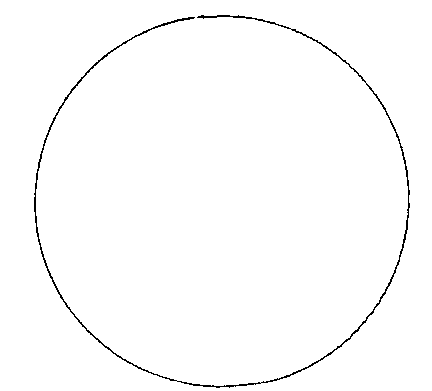 12.4. Curves
12.4. Curves  12.4. Curves
12.4. Curves What about curves? We can use many very small line
segments, perhaps even points (= line segment of unit length with
no orientation) to produce curves.

Example circle:
An arbitrary point (x,y) on circle of radius R and centre (0.0,0.0)
may be represented by vector pair:
(R*cos,R*sin
)
whereis angle that radius through
the point makes with x-axes. Hence incrementfrom 0 to 360 in N-equal
increments produces N-gon = N sided equilateral polygon.
If N is large enough, looks like a circle.
program CIRCLE
call export(stdin,stdout); {Allow library to use stdio.}
call askdev(device);
input radius ;
call start(2);
call plot(9.5,7.375,-3); {centre circle }
call plot(radius,0.0,3); {move to radius of circle}
theta0.0;
theta_inc2*PI/100;
for i1 to 100 do
thetatheta + theta_inc;
call plot(radius*cos(theta),radius*sin(theta),2);
{draw to next point on circle radius}
endfor;
call enplot;
end_program_circle.

We can produce other geometric curves in the same way = PARAMETRIC EQUATIONS

Fig. 12.1 : (a). Circle.

Fig. 12.2 : (b). Circle?












